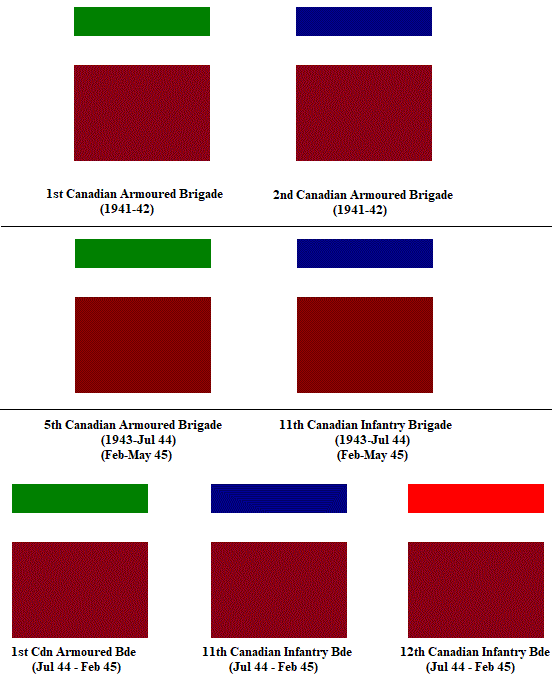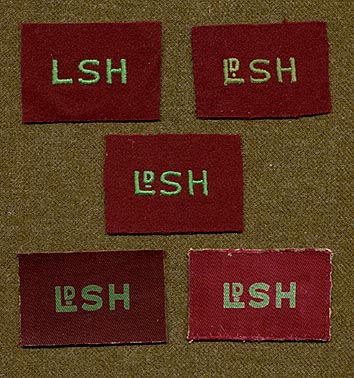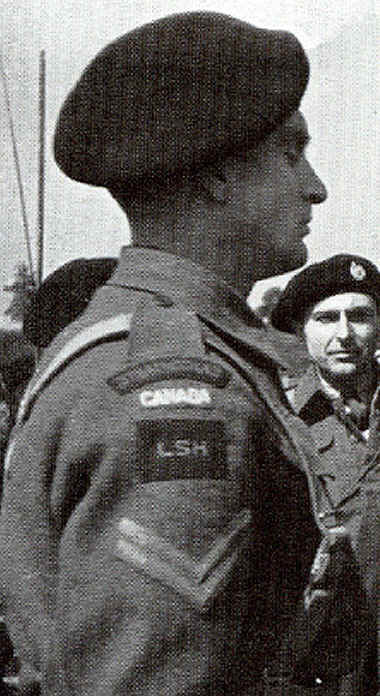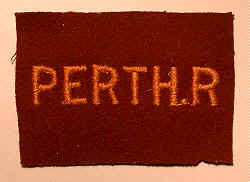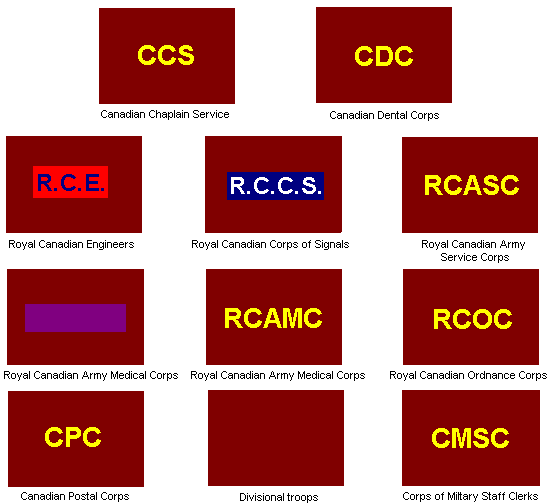|
|
|
|
|
|
Formation patches were adopted in the summer of 1916 in time for Canadian participation in the Battle of the Somme. Known as "Battle Patches", the patches were created as an aid to command and control of fighting troops in the battle line and extended later to other elements of the division. Originally placed on the back of tunics, just below the collar, the patches were quickly moved to uniform sleeves. The division was represented by a maroon rectangle 3 inches wide by 2 inches tall, while individual units were further designated by coloured geometric shapes worn in conjunction with the divisional patch. The maroon shade was also known as 'garnet' which was also the first name of Garnet Hughes, the commander of the division before it was broken up, and also the son of the Minister of Militia and Defence.1
Second World War The 1st Canadian Division in the Second World War readopted the divisional battle patch that had been worn in the First World War.2 Shoulder patches were made from three materials mainly (canvas, felt and wool) and were first issued in 1941. Officers at Brigade Headquarters of the Third Division wore coloured strips half an inch wide by three inches long above the Division patch. The senior brigade was designated by green, the middle brigade by red and the junior brigade by blue. This system of designating Brigade staff officers was also a readoption of Great War practice.
The division was reorganized several times as the desired mix of armour and infantry changed throughout the war. Originally envisioned as a tank-heavy formation, the division fielded two armoured brigades in 1941. In January 1943, based on British experience in the Western Desert, armoured divisions reorganized to include one armoured brigade and one infantry brigade. In Italy in the summer of 1944, additional infantry was desired and a second infantry brigade was added. This addition led the mis-alignment of coloured brigade bars. In the infantry division, the middle brigade wore a red strip over the division flash and the junior brigade blue. Since the 11th Brigade was already wearing blue, the junior brigade, the newly created 12th, adopted red. Supporting arms were also differentiated by the use of initials on the division patch; towards the middle of the war, these patches began to be phased out in favour of plain divisional patches worn in conjunction with embroidered (or printed) shoulder titles worn on the upper sleeves of the battle dress.3 For further information, see the book DISTINGUISHING PATCHES by Clive M. Law, published by Service Publications.
Webmaster's Collection
Notes
|
||||
© canadiansoldiers.com 1999-present
 5th Canadian
Division Formation Insignia
5th Canadian
Division Formation Insignia
